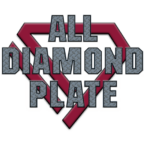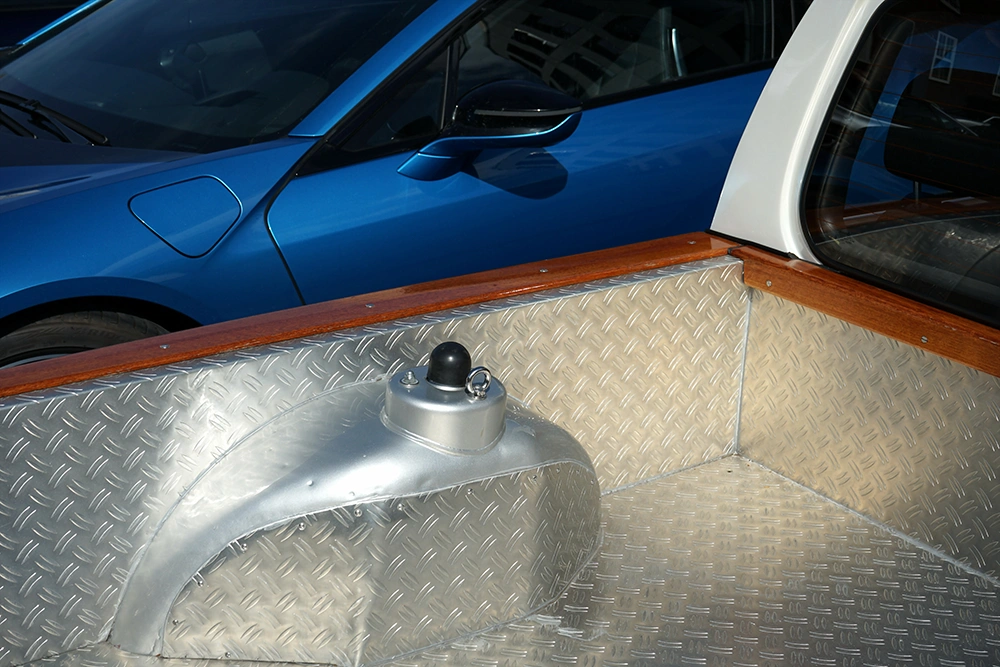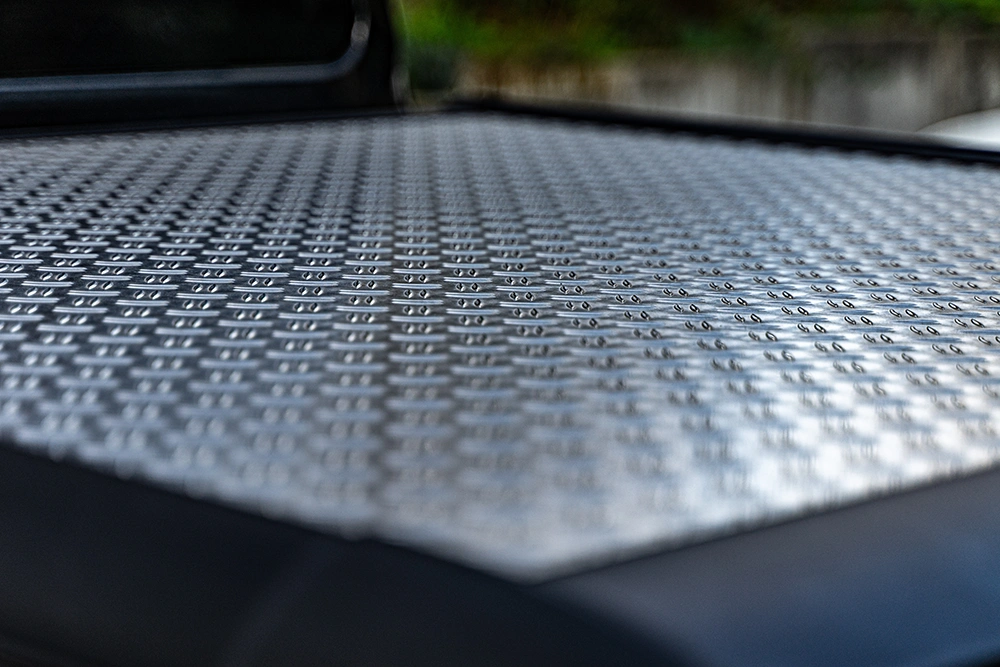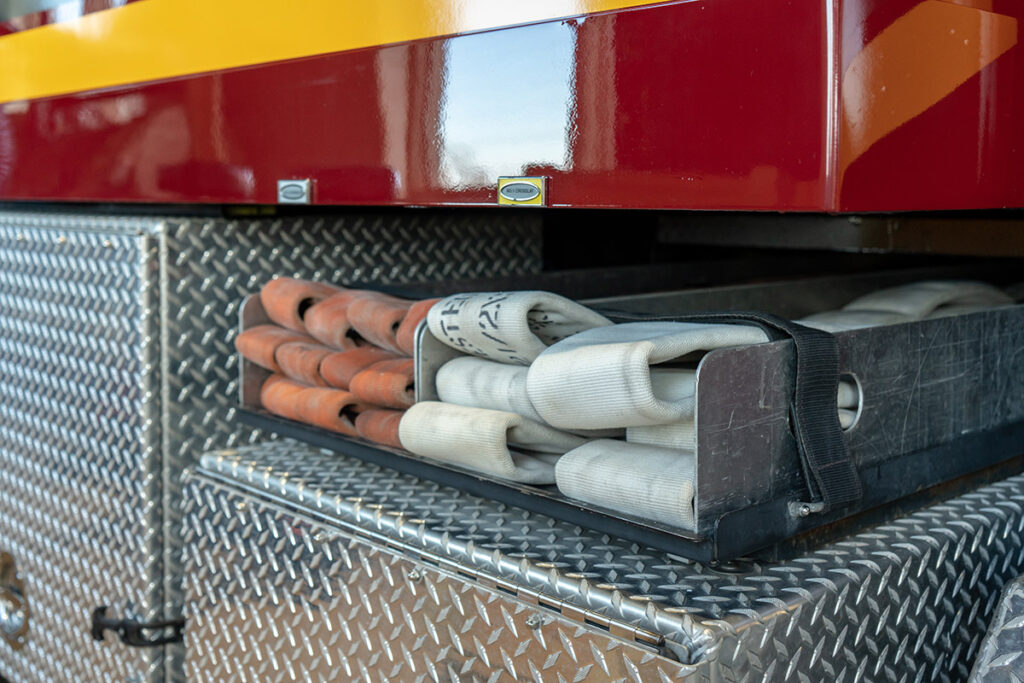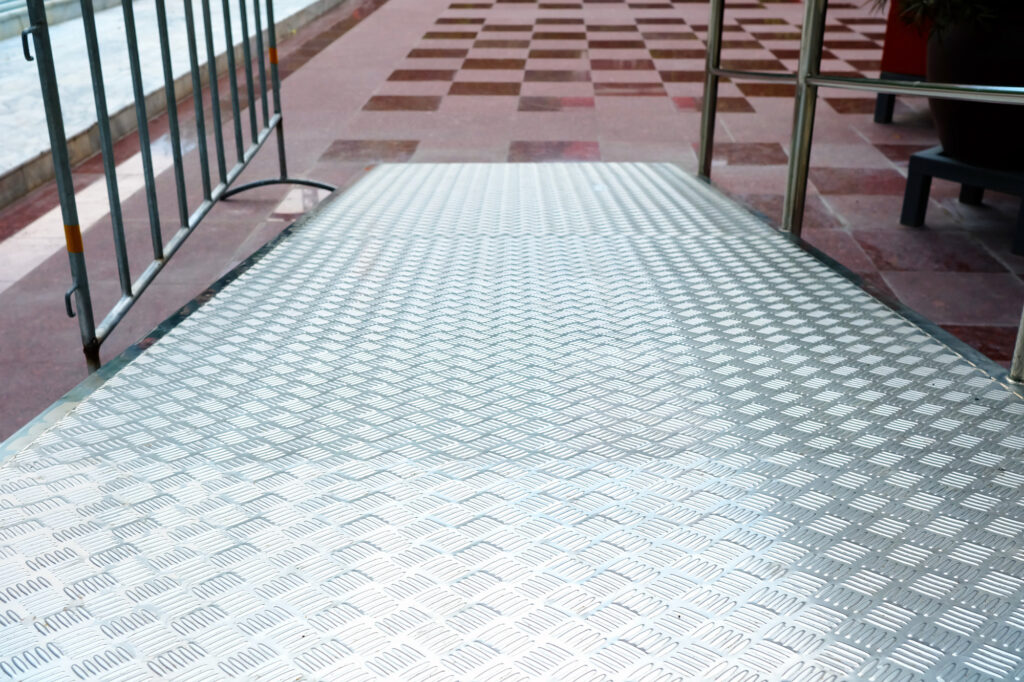Aluminum Diamond Plate
Aluminum diamond plate, also known as checker plate, tread plate, or floor plate, is a type of metal sheet that features a distinctive raised pattern of diamonds or lines on one side, while the other side remains smooth. This texture gives the material its characteristic slip-resistant surface, making it ideal for a variety of applications where both durability and safety are important. The material’s inherent properties—lightweight, corrosion-resistant, and aesthetically appealing—add to its wide-ranging utility across industries such as construction, automotive, marine, and manufacturing.
Composition and Manufacturing
Aluminum diamond plate is made from aluminum alloys, primarily the 3000 and 6000 series. The 3000 series alloys are known for their excellent corrosion resistance and good strength, making them a popular choice for environments exposed to moisture or harsh weather conditions. The 6000 series, typically alloyed with magnesium, offers increased strength and durability, making these plates suitable for more demanding applications like heavy-duty flooring or high-traffic areas.
The manufacturing process of aluminum diamond plate involves hot-rolling or cold-rolling aluminum sheets. During the rolling process, a pattern of raised diamonds is pressed into the metal. This pattern serves not only for visual appeal but also improves traction, preventing slips and falls, which is a critical feature for many industrial and commercial uses.
Key Properties
Aluminum diamond plate has several attributes that make it highly desirable:
Lightweight: Despite its strength, aluminum diamond plate is relatively light compared to steel or other metals, making it easy to transport, handle, and install. This is especially useful in applications like truck beds, trailers, or portable ramps where weight can significantly impact fuel efficiency or ease of use.
Corrosion-Resistant: One of aluminum’s greatest advantages is its natural resistance to corrosion. The metal forms a protective oxide layer when exposed to air, which helps prevent rust. This makes aluminum diamond plate suitable for use in wet or marine environments where corrosion can be a concern.
Durability: Aluminum is a durable material that can withstand significant wear and tear. The raised diamond pattern adds further durability, preventing the surface from being easily scratched or worn down.
Aesthetic Appeal: The polished finish of aluminum diamond plate is visually appealing, often giving a sleek, industrial look to any application. It is commonly used in architectural design or interior decoration for both its practicality and style.
Common Uses
1. Flooring and Staircases
Aluminum diamond plate is widely used in industrial and commercial settings for flooring and stair treads. The non-slip surface provides extra grip, ensuring safety in areas prone to moisture or oil spills. Factories, warehouses, and garages often use diamond plates for their flooring needs, as it can handle heavy loads without becoming damaged.
2. Vehicle Applications
The automotive and trucking industries heavily utilize aluminum diamond plate for truck beds, trailer floors, and toolboxes. It is durable enough to withstand harsh weather conditions, impacts, and abrasions while still being lightweight enough to avoid adding unnecessary weight to vehicles. Its corrosion resistance ensures a long lifespan, even when exposed to road salts, mud, and other potentially corrosive substances.
3. Marine Applications
In the marine industry, aluminum diamond plate is used for boat flooring and docks because of its corrosion-resistant properties and slip-resistant surface. It can handle exposure to saltwater and varying weather conditions without deteriorating, making it an ideal choice for long-lasting and low-maintenance marine installations.
4. Decorative and Architectural Use
In modern architecture and interior design, aluminum diamond plate is often used for aesthetic purposes. It can be found as wall panels, backsplashes, or decorative accents in industrial-style homes and commercial buildings. Its reflective finish adds a sleek, contemporary look to any space.
Benefits Over Other Materials
Compared to steel diamond plate, aluminum diamond plate offers several key advantages. First, aluminum is much lighter than steel, which makes it easier to work with and install. Its corrosion resistance is also superior, particularly in environments where moisture or harsh chemicals are a concern. Steel may need additional coatings or treatments to prevent rust, whereas aluminum naturally resists corrosion.
Moreover, aluminum is more malleable, allowing it to be shaped and fabricated into a variety of forms without sacrificing its strength. Although steel is stronger in terms of sheer load-bearing capacity, aluminum diamond plate is generally more than sufficient for most applications, especially in scenarios where weight and corrosion resistance are more critical factors.
Conclusion
Aluminum diamond plate is a versatile, durable, and aesthetically appealing material with a wide range of applications. Its lightweight, corrosion-resistant, and non-slip properties make it a popular choice across industries, from transportation to construction to interior design. Whether it’s providing safety on staircases, protecting truck beds, or adding a decorative touch to modern interiors, aluminum diamond plate continues to be a reliable and efficient material solution.
